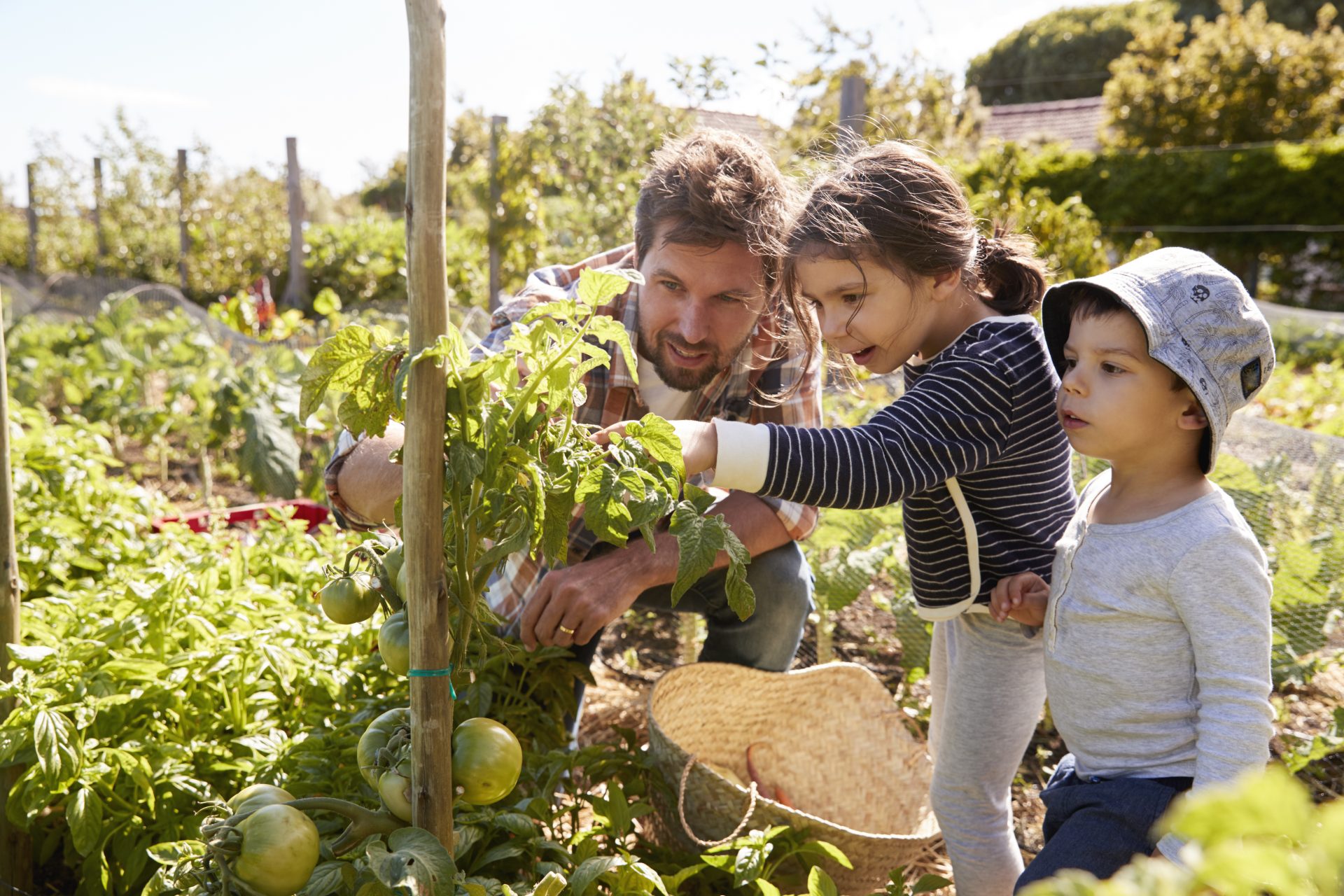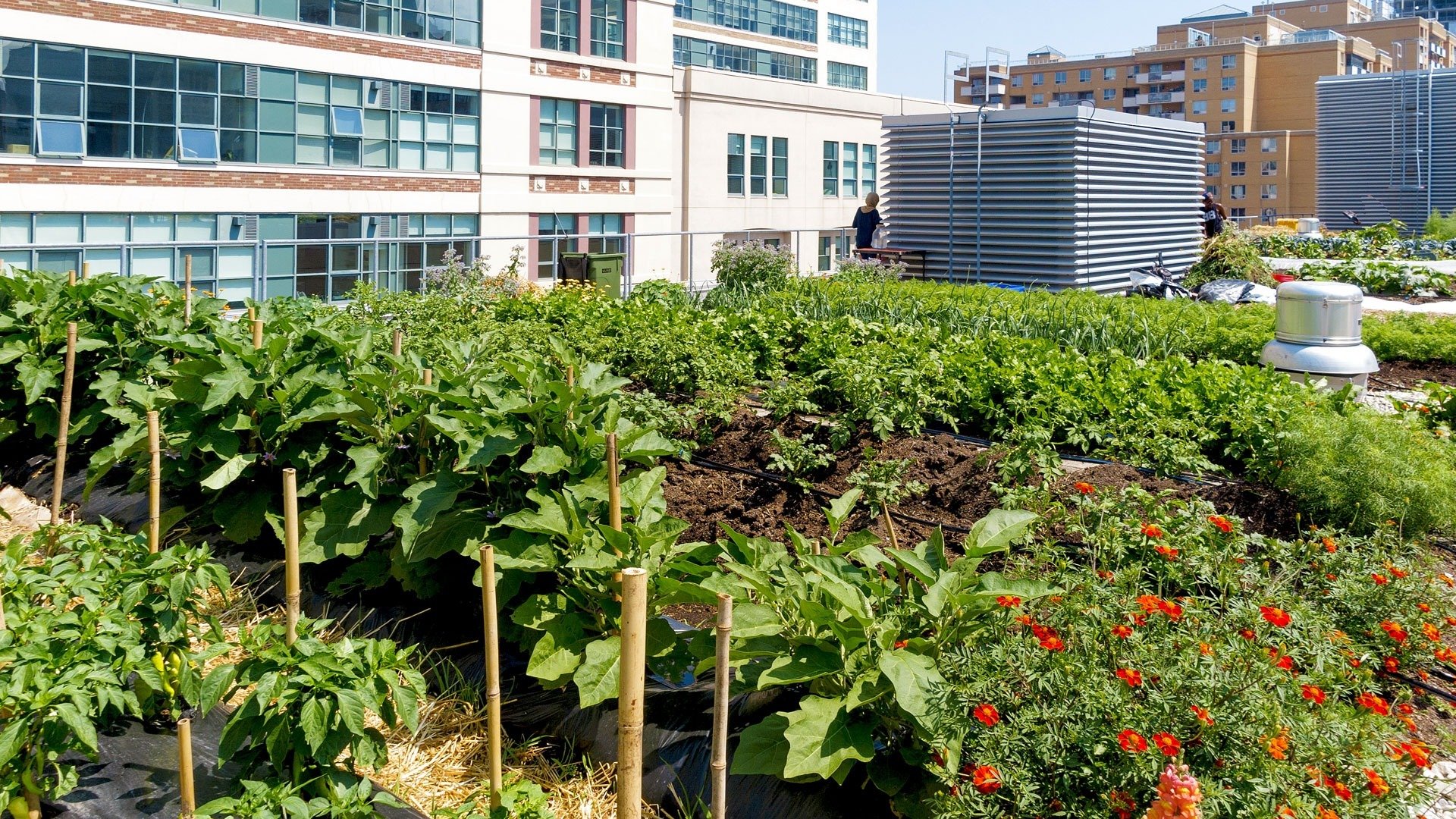First-Time Bakers and Gardeners Seek Guidance and Community Online
Somewhere amid the polarization that’s playing itself out on social media — a critical and impossible-to-ignore schism between those privileged to ride out the coronavirus pandemic with from-home work and enriching activities, and vulnerable communities struggling for even the most basic of resources — there is an optimistic narrative. Fractured and isolated as Americans may be as we shelter in place, some of us are seeking, and finding, solace in each other, virtually.
This has been especially evident in the masses of first-time bakers and gardeners taking to Instagram and Twitter. Yes, there’s been a backlash against perceived flour, yeast, and seed hoarders as those commodities continue to be difficult to procure after spikes in sales. But there’s also been a concurrent surge of goodwill as novices attempting to forge deeper relationships with their co-shut-ins and whatever bits of nature they can access, reach out to each other online.
“We’re becoming more capable with technology, we are finding new ways to connect with our neighbors, and all of this can be a way in which we can make sense of this pandemic,” says Roxane Cohen Silver, a psychology professor at the University of California, Irvine. And it’s working to the benefit of those on both sides of the equation: the ones who need guidance, and the ones who have it to offer.
"It’s daunting for people to figure out, ‘Where do I start?'"
Help for New Bakers
Some Internet denizens have sought help from professional chefs. A recent tweet from Nigella Lawson, for example, suggested using leftover potato-boiling water to incorporate into bread dough for better texture and rise, and got over 6,000 retweets and more than 52,000 likes. Other would-be bakers have turned to less-vaunted sources, like Oklahoma City resident Matthew Broberg-Moffitt, a business writer and former counselor who once trained as a chef.
Just as COVID-19 began driving Americans indoors, Broberg-Moffitt offered to answer “simple baking questions” for his 6,000-plus Twitter followers. He got dozens of requests: for gluten-free cookie recipes, suggestions for alternatives to scarce yeast, advice on what to do when the dough doesn’t rise, an explanation of the difference between whole wheat and white flours, and tips for making bread turn out less dense.
“I believe there’s some kind of collective consciousness that’s looking to fulfill an unmet need, and many people associate that with baking,” Broberg-Moffitt says. “I’m really amazed at how many people are trying it.”
Demystifying Bread Baking
One of those people is Shannon Hall, a stay-at-home mom of three in Cincinnati who says she’s always been fascinated but intimidated by the number of steps it takes to produce a loaf of bread. But when schools closed, she says she “longed for a bit of comfort for myself and my children,” and decided to take Broberg-Moffitt up on his offer.
“He gave me a simple bread recipe to follow” from King Arthur Flour, Hall says, one that the company claims is the “easiest loaf of bread you’ll ever bake.” She read and re-read the directions, checked back in with Broberg-Moffitt several times for moral and practical support, then “followed the recipe diligently.” When it didn’t turn out the way she’d hoped, she vowed never to bake again. She’s since reconsidered, though. She’s waiting for a rolling pin she ordered to arrive in the mail and gearing up to try a simpler baking task: homemade biscuits, the thought of which, she says, “makes me smile.”
Broberg-Moffitt, too, derives happiness from his exchanges with Hall and other bakers he’s coached, many of whom follow up with him after their initial efforts to show him what they’ve accomplished on their own. “I know people enjoy getting a personal response rather than Googling a question,” he says, but “I also enjoy trying to be a positive, encouraging presence. I’m a caregiver, so my needs are being met when I can fulfill that role.”
Where does he turn when he’s the one needing inspiration? The King Arthur Flour website, Divas Can Cook, and Sally’s Baking Addiction.
Pizzas and Pitas
Ehab Bander, a tech designer in San Francisco, has taken baking classes a couple of times but put off testing his new-found knowledge, in part because baking still seemed like “a bit of a mystery: If you do one step wrong you’ll mess it up. I definitely had fear,” he says. When coronavirus led to the closing of local bakeries and forced him, his wife and their twin 8-year-old daughters to stay home, he found “the flour in the pantry was just staring at me.”
Rather than simply staring back, Bander put the flour to use, making pizza dough. “It was a great way to share something with my kids, and we didn’t have to [go out] at a time when we need to be hunkering down for safety,” he says. His impulse has been to turn to YouTube for guidance, which he’s been scouring for a pita recipe to spark memories of his childhood in Lebanon. And gearing up to whip up a sourdough starter for the first time (thanks to the national dearth of yeast), he’s thinking of signing up for an Instagram class to “make sure I don’t mess it up.”
Growing Your Own
In Norwalk, Connecticut, Layla Schlack, an editor at Wine Enthusiast, sought solace from the mounting health crisis by starting her first garden in the one-tenth of-an-acre sliver of her backyard. It wasn’t an obvious decision. “I have no idea how to do anything with plants; I’ve never had any success keeping houseplants,” she says. But with “runs on groceries and people really scared about whether the supply chain was going to dry up, I realized I can grow food — not everything I need, but enough to ease some of the pressure and be less reliant.”
As someone working in the food industry, Schlack had plenty of ideas about where to turn for help, like Purdue University’s online plant database, which she says is a great starter resource for learning about various cultivars.
Schlack also put out a call for help on Twitter, because “It’s daunting for people to figure out, ‘Where do I start?’” The responses she received compelled her to sign up for a free online introductory gardening class from Oregon State University, then to place an order from Johnny’s Seeds in Maine: heirloom tomatoes, yellow-eyed peas, Marfax beans, jalapeños and cabbage — things she thought would be versatile in the kitchen and hardy after harvesting. If all goes well, she’s planning to try her hand at planting garlic and onions in the fall.
As useful as the online gardening touchstone has been in this time of social distancing, Schlack says she’s looking forward to eventually communing in person with her neighbors, a mostly-elderly, unplugged population that’s doubtless a source of gardening know-how. And also, “Walking over to Lowe’s if I need a bag of soil really quick.”
Urban Growing
It’ll take time for Schlack to reap what’s she’s sown — the ground in the Northeast is just warming up. But she’s not alone among Americans feeling the need to grow something for their future food security. A recent survey conducted by Green Builder Media shows that Americans in their 20s, 30s, and over 65 consider growing their own food — even a little, and even in cities — to be an “essential survival tool and path to resilience.”
Whether this comes through growing food to share with immediate family or community members, gardening appeals in this moment to urbanites “limited in the ways they can help if they’re not essential healthcare workers, and gives them a sense of control,” says Annel Cabrera-Marus, director of engagement and programming for the New York Restoration Project.
Gardening is also appealing to suddenly-homebound moms and dads looking to engage with and nurture their kids, even if it means growing something in a pot on a windowsill. With this in mind, the NYRP, which runs 52 community gardens throughout the five boroughs, has started to share some of its educational resources on its Instagram page.
Building Community When We’re Not Together
In addition to running a giveaway of pawpaw seeds that “folks can [physically and] symbolically take care of while we’re quarantined,” says Cabrera-Marus, the organization will also be offering downloadable tools. These include instructions for starting seeds, mixing a growing medium, and finding what Cabrera-Marus calls currently “unavailable resources” — namely, seeds — by looking around their neighborhoods when they go out for air.
This might mean finding fruits and vegetables at the supermarket that they can extract viable seeds from. It might mean conducting neighborhood treasure hunts for everything from books to seed packets that Cabrera-Marus says “a lot of folks are leaving behind for one another — at the fronts of their buildings, in little free libraries, on billboards outside community gardens, as a way to say, ‘We’re in this together.’”
If first-time gardeners want to share what they’ve grown with each other online, Cabrera-Marus is all for it. But she also recognizes that this not an option for many in the low-resource communities NYRP serves.
When we’re all finally free to roam at will, Cabrera-Marus wants anyone who’s discovered gardening in these moments of isolation to feel inspired enough to find a local community garden and join it. “From this experience that’s unique to this time, I hope people will continue to take part in these activities — together.”
More Reading
The ins and outs of vegan hot dogs
April 16, 2024
7 books about onions, garlic and the wide world of alliums
March 13, 2024
Eat seasonally this winter with persimmons
January 18, 2024
Commit to sustainable habits with our Reduce Your Foodprint Challenge
December 18, 2023
9 homemade preserves to gift (or keep) this holiday season
December 12, 2023
Get creative with these food preservation methods
December 1, 2023
Meatless Monday: The first 20 years
November 1, 2023
Why 2023 is the International Year of Millets
October 5, 2023
Eat more grains — and keep it local
September 29, 2023
When it comes to sustainable spices, 'single-origin' isn’t everything
September 8, 2023


